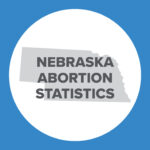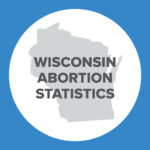Abortion Reporting: Wyoming (2021)
Wyoming’s 2021 abortion report was published online by the Wyoming Department of Health in June 2022.
Statistics and Changes in Wyoming Abortions, 2020-2021

The report does not include information on Planned Parenthood’s Wyoming abortion market share, but Planned Parenthood operates no abortion centers in Wyoming.
Abortion Totals and Trends
2021 marked the second full year of reporting since Wyoming’s abortion reporting law went into effect. In 2021, there were 98 abortions reported, all of which were induced chemically (Fig. 1). This was an increase of eight percent from the previous year (with chemical abortions increasing by 11 percent). However, the Charlotte Lozier Institute (CLI) estimates that Wyoming’s abortion rate was still under one abortion per 1,000 women of childbearing age (Fig. 2). As of November 2022, 24 states had released abortion statistics for 2021, with 17 states reporting that abortions had increased.
State Report Summary
In 2021, there were 67 abortions (68 percent) performed on Wyoming residents and 31 abortions (32 percent) performed on women from out-of-state. Thirty-three abortions (34 percent) were performed on women ages 24 and younger, while 48 abortions (49 percent) were obtained by women ages 25 to 34 and 17 abortions (17 percent) were on women ages 35 and older.
Sixty-two abortions (63 percent) were obtained by women with no previous live births, compared to 16 abortions (16 percent) on women with one prior live birth and 20 abortions (20 percent) on women with two or more previous births. Seventy-three of the abortions (74 percent) were performed on women who had never had an abortion before. Nineteen abortions (19 percent) were performed on women with one previous abortion, and six abortions (six percent) were on women with two or more previous abortions.
All of the abortions reported in Wyoming occurred at 10 weeks of gestation or earlier, with 64 abortions (65 percent) reported at six weeks or earlier and 34 abortions (35 percent) performed between seven and 10 weeks. No complications were reported.1
Abortion by Mail
Wyoming law requires that abortions be performed only by licensed physicians, and in 2021 all 98 abortion reporting forms were submitted by physicians who were licensed to practice medicine in Wyoming. According to the report, the reporting facilities were classified as doctor’s offices or clinics but included both physical locations and telemedicine abortions. Seventy-eight abortions were performed using drugs dispensed at a physical location, and 20 were performed using drugs sent via telemedicine. Wyoming is the first state to report the number of abortions that occurred through telemedicine.
The majority of Wyoming resident abortions occurred in other states. Neighboring Colorado, the top destination state, reported 414 abortions on Wyoming residents in 2021, an increase of 46 abortions from the 2020 total.
State Ranking
After ranking near the bottom of the list in CLI’s 2016 paper evaluating abortion reporting across the country, Wyoming has made significant improvements to its reporting. As a result of a law enacted in 2018, the state now maintains stronger reporting requirements and releases its annual abortion statistics online. However, Wyoming could continue to improve its abortion reports by publishing more of the information it collects, including the demographics of women obtaining abortions in the state. Wyoming could also require that any abortion complications be reported by the healthcare providers who treat them.


- This data is collected in a non-systematic and non-verifiable way and cannot be used to calculate either an accurate abortion mortality rate or an accurate abortion complication rate for the state.
- Rates were calculated by CLI using the following formula: (total number of abortions performed in Wyoming ÷ number of resident women ages 15-44) x 1,000. Rates may differ slightly from previous CLI articles due to revised population estimates. Population estimates were obtained from CDC WONDER. Estimates for 2005-2009 are intercensal estimates of the July 1 resident population. Estimates for 2010-2019 are Vintage 2020 postcensal estimates of the July 1 resident population. Estimates for 2020-2021 are Vintage 2021 postcensal estimates of the July 1 resident population. Estimates were produced by the U.S. Census Bureau and the National Center for Health Statistics.



























